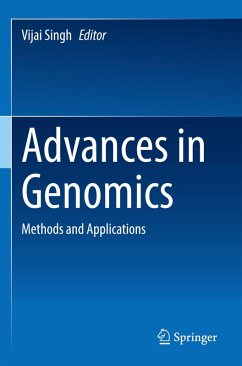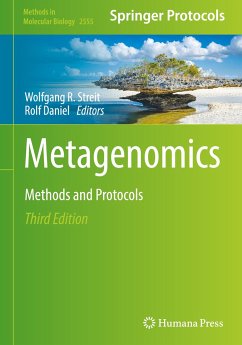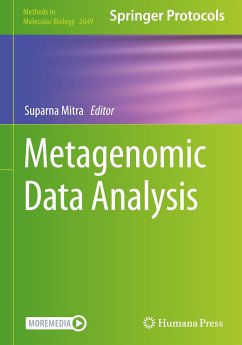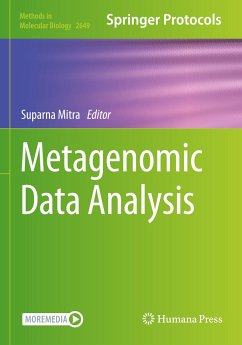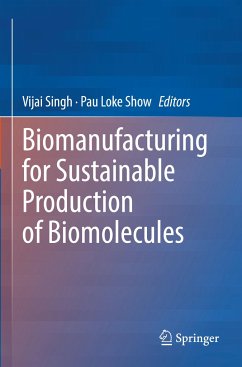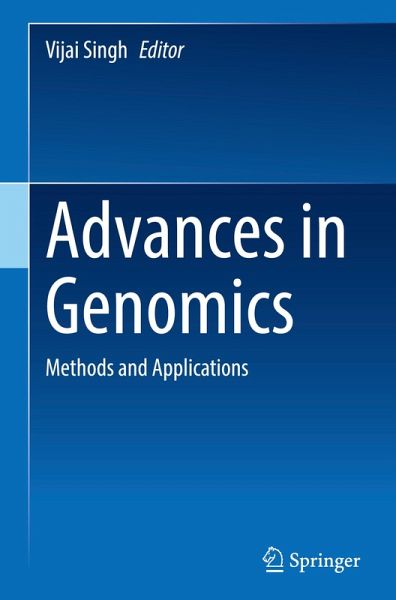
Advances in Genomics
Methods and Applications
Herausgegeben: Singh, Vijai

PAYBACK Punkte
83 °P sammeln!
This book provides a comprehensive overview of genomics and its diverse applications. Chapters cover genomics data generation methods, computational tools, gene annotation, transcriptomics, DNA barcoding, next-generation sequencing, functional genomics, metagenomics, synthetic genomics, microarray analysis, nutrigenomics, genome editing, and more. This book offers a valuable source of information for not only beginners in genomics, but also for students, researchers, scientists, clinicians, practitioners, policymakers, and stakeholders who are interested in harnessing the potential of genomics...
This book provides a comprehensive overview of genomics and its diverse applications. Chapters cover genomics data generation methods, computational tools, gene annotation, transcriptomics, DNA barcoding, next-generation sequencing, functional genomics, metagenomics, synthetic genomics, microarray analysis, nutrigenomics, genome editing, and more. This book offers a valuable source of information for not only beginners in genomics, but also for students, researchers, scientists, clinicians, practitioners, policymakers, and stakeholders who are interested in harnessing the potential of genomics in many areas.





